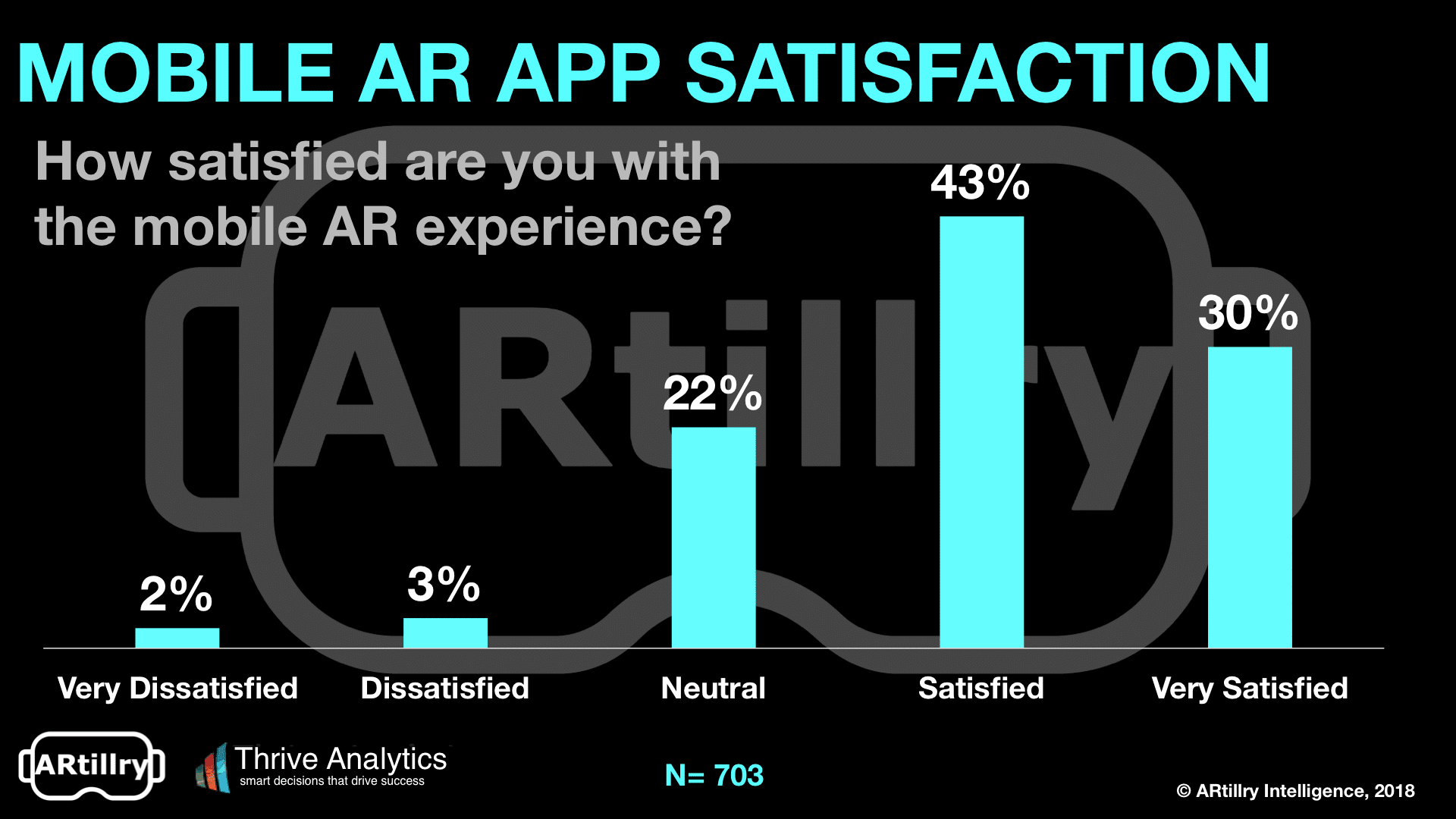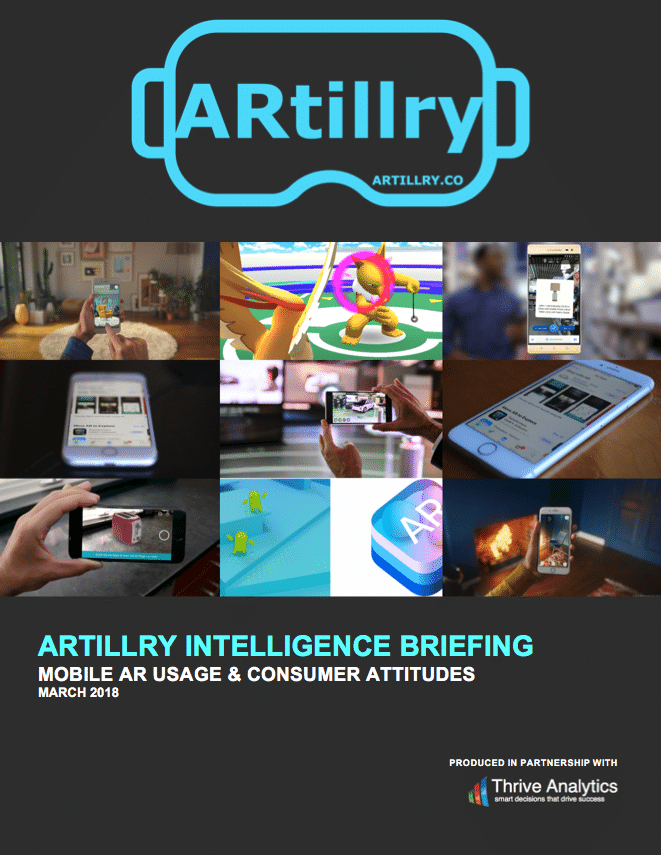
This post is adapted from ARtillry’s latest Intelligence Briefing, Mobile AR Usage & Consumer Attitudes. It includes some of its data and takeaways, including original survey research. More can be previewed here and subscribe for the full report.
How do consumers feel about mobile AR? Who’s using it? How often? And what do they want to see next? Perhaps more importantly, what are non-users’ reasons for disinterest? And how can app developers and anyone building mobile AR optimize product strategies accordingly?
These are the questions we set out to answer. Working closely with Thrive Analytics, ARtillry Intelligence wrote questions to be presented to more than 2000 U.S. adults in Thrive’s established consumer survey engine. And we’ve analyzed the findings in a narrative report.
This follows last month’s ARtillry Intelligence Briefing, which examined mobile AR app strategies and business models. Now, a deeper view into real consumer usage and attitudes provides new dimension on mobile AR strategy development and opportunity spotting.
Specifically, one third of consumers surveyed have used a mobile AR app. And those consumers appear active, with more than half reporting that they use mobile AR apps at least weekly. The top app category by far is gaming, which we attribute mostly to Pokémon Go.
Mobile AR users are also engaged, with 73 percent reporting satisfaction or high satisfaction. But beyond these and a few other positive signals, there are areas for improvement. For example, non-mobile AR users report low likelihood of adopting soon, and explicit disinterest.
The disparity between current-user satisfaction and non-user disinterest underscores a key challenge for XR: you have to “see it to believe it.” To reach high satisfaction levels, apps have to first be tried. This presents marketing and logistical challenges to push that first taste.
Put another way, AR’s highly visual and immersive format is a double-edged sword. It can create strong affinities and engagement levels. But the visceral nature of its experience can’t be communicated to prospective users with traditional marketing like ad copy or even video.
The same challenge was uncovered in our corresponding VR report last August (we’ll publish the second wave in Q3). This makes it a common challenge with immersive tech. It will take time and cost reductions before they reach a more meaningful share of the consumer public.
Meanwhile, there are strategies to accelerate that process, and to build AR apps that are compelling to consumers’ current standards. For example, social features can boost AR stickiness and network effect, which will be accelerated with multi-player support in ARkit.
There is of course a lot more to it, which we break down in the report. Meanwhile, this will continue to be a moving target and require lots of strategic precision and an informed position. Stay tuned for lots tidbits and survey results we’ll unpack in the coming weeks.
For a deeper dive on AR & VR insights, see ARtillry’s new intelligence subscription, and sign up for the free ARtillry Weekly newsletter.
Disclosure: ARtillry has no financial stake in the companies mentioned in this post, nor received payment for its production. Disclosure and ethics policy can be seen here.



